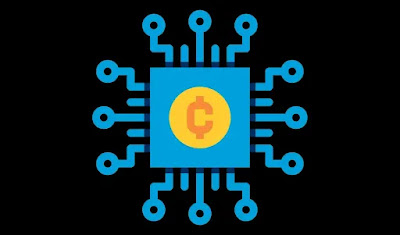How Cryptocurrency Works Beginners
Cryptocurrency has become a buzzword in recent years. It is a type of digital currency that uses encryption techniques to regulate the generation of units of currency and verify the transfer of funds. Cryptocurrency is decentralized, meaning that it is not controlled by any central authority. In this article, we will explore how cryptocurrency works for beginners.
What is Cryptocurrency?
Cryptocurrency is a type of digital currency that uses cryptography to secure and verify transactions as well as to control the creation of new units. Unlike traditional currency, which is controlled by governments and financial institutions, cryptocurrency is decentralized and operates independently of any central authority. It is also known as a digital or virtual currency.
Cryptocurrency is created through a process called mining. It involves solving complex mathematical problems using high-powered computers to validate transactions and add them to a public ledger known as the blockchain. The blockchain is a distributed ledger that records all transactions that occur within the network. It is maintained by a decentralized network of users rather than a central authority.
Blockchain technology is the underlying technology that makes cryptocurrency possible. It is a decentralized database that records transactions in a secure and transparent manner. The blockchain consists of a chain of blocks, each containing a record of transactions.
Each block is linked to the previous block in the chain, creating a chain of blocks. The blocks are secured using cryptographic techniques, making them tamper-proof. The blockchain is maintained by a network of nodes that validate transactions and add them to the blockchain.
The blockchain has several benefits, including transparency, security, and decentralization. It allows for secure and transparent transactions without the need for intermediaries such as banks or financial institutions.
Cryptocurrency Mining
Cryptocurrency mining is the process of validating transactions and adding them to the blockchain. It involves solving complex mathematical problems using high-powered computers. The first miner to solve the problem is rewarded with newly created cryptocurrency units.
Mining is an essential component of cryptocurrency as it ensures the integrity of the blockchain. Miners validate transactions and add them to the blockchain, creating a tamper-proof record of all transactions. Mining also ensures that the supply of cryptocurrency is limited, preventing inflation.
Digital Wallet
A digital wallet is a software application that allows users to store, send, and receive cryptocurrency. It is similar to a traditional wallet but is used to store digital currency instead of physical currency. A digital wallet consists of two keys, a public key and a private key.
The public key is used to receive cryptocurrency, while the private key is used to send cryptocurrency. Digital wallets are secure and provide users with complete control over their cryptocurrency. There are several types of digital wallets, including desktop wallets, mobile wallets, and web wallets.
Public and Private Keys
Public and private keys are essential components of cryptocurrency. They are used to secure transactions and protect users' cryptocurrency. The public key is used to receive cryptocurrency, while the private key is used to send cryptocurrency.
The public key is a cryptographic code that is publicly visible and can be shared with anyone. The private key, on the other hand, is a secret code that should be kept secure and never shared with anyone. Anyone who has access to the private key can access the user's cryptocurrency.
Cryptocurrency Exchange
A cryptocurrency exchange is a platform that allows users to buy, sell, and trade cryptocurrency. It is similar to a traditional exchange but is used to trade digital currency instead of physical currency. Cryptocurrency exchanges allow users to exchange one type of cryptocurrency for another or exchange cryptocurrency for traditional currency.
There are several types of cryptocurrency exchanges, including centralized exchanges and decentralized exchanges. Centralized exchanges are operated by a central authority and act as intermediaries between buyers and sellers. Decentralized exchanges, on the other hand, operate on a peer-to-peer basis, allowing users to trade directly with one another without the need for intermediaries.
Decentralization
Decentralization is a core principle of cryptocurrency. It means that the network is not controlled by any central authority, such as a government or financial institution. Decentralization ensures that the network is secure, transparent, and free from censorship.
Decentralized cryptocurrencies are designed to operate independently of any central authority, making them resistant to censorship and control. Examples of decentralized cryptocurrencies include Bitcoin, Ethereum, and Litecoin.
Smart Contracts
Smart contracts are self-executing contracts that are executed automatically when certain conditions are met. They are built on top of blockchain technology and are designed to automate the execution of contracts. Smart contracts can be used to automate a wide range of transactions, including financial transactions, real estate transactions, and supply chain management.
Smart contracts are secure and tamper-proof, ensuring that transactions are executed as intended. They eliminate the need for intermediaries, making transactions faster and more efficient.
Distributed Ledger
A distributed ledger is a database that is maintained by a network of nodes rather than a central authority. It is similar to a blockchain but is not limited to recording financial transactions. Distributed ledgers can be used to record any type of data, including medical records, property ownership, and voting records.
Distributed ledgers are secure and transparent, ensuring that data is stored in a tamper-proof manner. They are also decentralized, meaning that they are not controlled by any central authority.
Cryptography
Cryptography is the process of converting information into secure code. It is used to secure transactions and protect users' cryptocurrency. Cryptography is an essential component of cryptocurrency, as it ensures that transactions are secure and tamper-proof.
Cryptography is used to encrypt users' private keys, ensuring that they are kept secure and protected. It is also used to validate transactions and ensure that they are executed as intended.
Consensus Algorithm
A consensus algorithm is a mechanism used to validate transactions and add them to the blockchain. It is a key component of blockchain technology, ensuring that transactions are secure and tamper-proof.
There are several types of consensus algorithms, including Proof of Work (PoW), Proof of Stake (PoS), and Delegated Proof of Stake (DPoS). PoW is the most commonly used consensus algorithm and is used by Bitcoin and Ethereum.
Conclusion
In conclusion, cryptocurrency is a type of digital currency that uses encryption techniques to secure and verify transactions. It is decentralized, meaning that it is not controlled by any central authority. Blockchain technology is the underlying technology that makes cryptocurrency possible, and mining is the process of validating transactions and adding them to the blockchain.
Digital wallets are used to store, send, and receive cryptocurrency, and public and private keys are used to secure transactions. Cryptocurrency exchanges are used to buy, sell, and trade cryptocurrency, and decentralization ensures that the network is secure, transparent, and free from censorship.
Smart contracts are self-executing contracts that automate the execution of contracts, and distributed ledgers are databases that are maintained by a network of nodes. Cryptography is used to secure transactions and protect users' cryptocurrency, and consensus algorithms are used to validate transactions and add them to the blockchain.
It is important to understand how cryptocurrency works for beginners to participate in the cryptocurrency market. With continued learning and understanding, beginners can become more involved in cryptocurrency and reap its benefits.








0 Comments